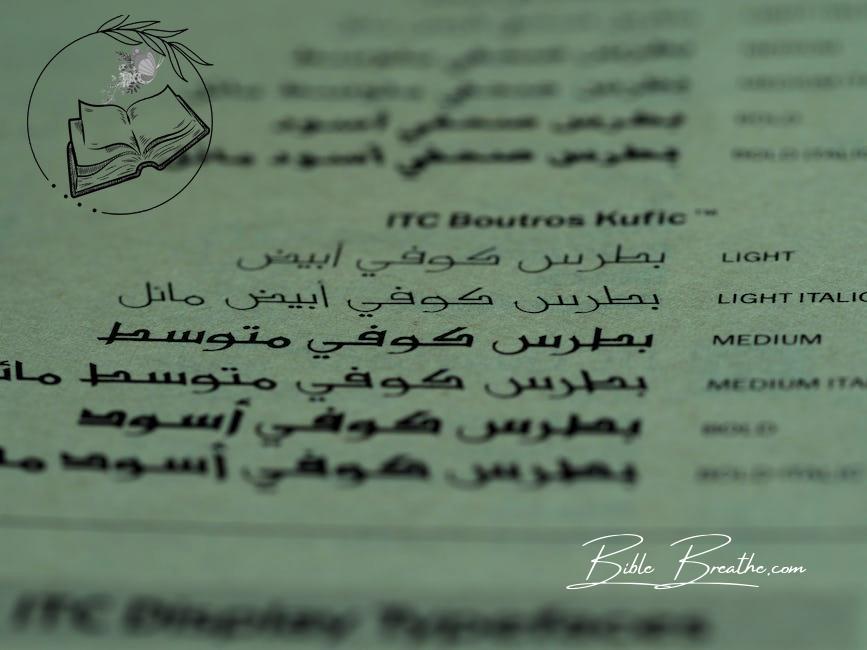How many times was the Bible translated?
It’s like taking a deep dive into the rich history of God’s Word, my friends.
Picture this: the Bible, God’s love letter to humanity, speaking in all kinds of languages, like a preacher delivering the same sermon in a thousand different tongues.
This is a story of how faith and culture collide in a beautiful symphony.
Back in the day, we had the Septuagint and the Vulgate, early pioneers in this grand translation mission.
Think of them as the OG translators, paving the way for the rest of us.
And then there were folks like Wycliffe and Tyndale, driven by passion and purpose, pushing the boundaries of language to make God’s message accessible to all.
Now, it’s not just about changing words, folks.
It’s about keeping the heart of the message intact.
The original Hebrew, Greek, and Aramaic texts, like the blueprint of a building, guided these translations.
They used various techniques, from making it sound smooth and modern (dynamic equivalence) to staying true to the original, word for word (formal equivalence).
Our man Jerome came in with the Vulgate, and Luther with his Bible – they had their unique takes.
Each translation, like a different flavor of ice cream, offers a fresh perspective on God’s truth.
So, we’re going to journey through time, just like a time machine, exploring how these translations influenced the Scripture, the formation of the canon, and how they made us grasp the Old Testament and the New Testament in all their glory.
It’s a ride that’s impacted us in ways we can’t even imagine.
So, buckle up, because we’re taking this incredible linguistic journey together, friends! 🚀📖
Key Takeaways
- How many times was the Bible translated? The Bible has undergone numerous translations throughout its history, reflecting its journey from ancient to modern times. The initial texts were written in Hebrew, Aramaic, and Greek, and as Christianity spread, translations emerged to make the Scriptures accessible to different cultures and languages.
- Translating the Bible is a complex endeavor that seeks to preserve the original message and intent of the text while making it understandable to diverse populations. Translators grapple with linguistic nuances, cultural contexts, and theological nuances to ensure accuracy and clarity.
- The Bible’s translation efforts continue today, with ongoing projects to make it available in every language spoken worldwide. This endeavor recognizes the importance of providing access to the Scriptures for all people, regardless of their language or cultural background.
- The diversity of Bible translations allows individuals to engage with the Scriptures in ways that resonate with their unique linguistic and cultural contexts. It emphasizes the enduring relevance and universal message of the Bible, which continues to impact lives and guide faith journeys around the world.
The Bible Unveiled: A Tale of Many Tongues
Photo modified by BibleBreathe.com. Original photo by Luis Quintero on Pexels
Ever had a curious itch to know just how many times the Bible has taken a journey in translation, speaking various languages while retaining its divine essence?
Come, let’s explore this adventure through time, as the ancient scrolls transformed into words that resonate across generations.
A Genesis of Translations
“”God’s word is like a flashlight on a dark path, showing us the way.”” – Psalm 119:105 (KJV)
Long ago, the Bible spoke in tongues like Hebrew, Aramaic, and Koine Greek.
But as the world beckoned a broader audience, the need to translate became clear.
Enter the Septuagint, a pioneer in translation, turning Hebrew into Greek around 300 years before the common era.
Suddenly, Greek-speaking communities had a direct line to the ancient wisdom.
Early Heroes of Translation
Time danced on, and more heroes arose to make God’s word accessible to diverse linguistic communities.
In the 4th century CE, Jerome stepped into the ring, daring to translate the Bible into Latin—the birth of the Vulgate, a Latin translation that shaped Christianity in the West.
Skip ahead to the 14th and 15th centuries, and meet Wycliffe and Tyndale, the brave souls who dared to translate the Bible into English when Latin held the reins.
Their courage set the stage for the Luther Bible in the 16th century, a cornerstone of the Protestant Reformation.
Yet, translation was not just about changing languages; it was about choosing the right technique.
Translators grappled with dynamic equivalence and formal equivalence, striving for that sweet spot between meaning and readability.
Unveiling the Texts
“”Life is more than just what you eat; it’s the wisdom that comes from God’s mouth.”” – Matthew 4:4 (KJV)
As time marched on, the scholarly eye turned to the texts beneath the translations.
The Textus Receptus became a cornerstone, shaping numerous translations.
Meanwhile, various text-types like the Alexandrian type rose, stirring scholarly debates.
So, just how many times did the Bible go through this dance of translation?
Countless times, each translation a testimony to its enduring message.
From ancient scrolls to modern renditions, the Bible’s journey through the hands of dedicated translators endures, lighting the way for those seeking wisdom and truth.
In this journey, we’ve unveiled the historical tale of Bible translations, glimpsing the efforts of early heroes and the evolution of translation techniques.
We’ve encountered key players like the Septuagint, Vulgate, Wycliffe, Tyndale, Translation techniques, Textus Receptus, Dynamic equivalence, Formal equivalence, and more, gaining a profound understanding of this wondrous voyage.
The Bible’s Linguistic Adventure
Photo modified by BibleBreathe.com. Original photo by Brett Jordan on Pexels
In the grand tapestry of time, the Bible has taken a remarkable journey through the corridors of translation—a voyage from ancient tongues to the familiar languages we speak today.
Imagine it like a relay race, passing the sacred baton through generations, each carrying the light of understanding.
The Multilingual Roots
The Bible, originally penned in Hebrew, Aramaic, and Greek, embarked on this linguistic adventure.
Picture these ancient languages as the roots of a towering tree, and each branch represents a translation, reaching towards the heavens of comprehension.
In the beginning was the Word, and the Word was with God, and the Word was God.” – John 1:1 (KJV)
Septuagint and Latin Vulgate: Pioneering the Path
Among the early champions of translation were the creators of the Septuagint and the Latin Vulgate.
The Septuagint, like a beacon, lit up the Greek-speaking world with the Hebrew Scriptures, broadening access and understanding.
“And ye shall know the truth, and the truth shall make you free.” – John 8:32 (KJV)
Then, the Latin Vulgate emerged, bridging the linguistic gaps of its time, much like how modern subtitles translate a foreign film for a global audience.
The Masoretes: Blueprint Architects
As time flowed like a river, the role of the Masoretes echoed.
These meticulous scholars, akin to architects refining a blueprint, standardized the Hebrew text, ensuring uniformity and accuracy in the scriptures.
“Thy word is a lamp unto my feet, and a light unto my path.” – Psalm 119:105 (KJV)
Passing the Torch Across Time
Through the annals of history, the flame of the Bible’s message was carried forward by figures like Wycliffe, Tyndale, and Luther, each adding a new chapter to the translation saga.
Their contributions, like software upgrades, improved accessibility and understanding.
Translation techniques evolved, much like software updates, embracing both dynamic equivalence and formal equivalence, ensuring the essence of the message persisted, regardless of the language.
In this vast and intricate journey of translation, from ancient scripts to the digital age, the Bible remains a guiding light, illuminating hearts and minds across diverse languages and cultures.
The Rich Tapestry of Bible in English
Photo modified by BibleBreathe.com. Original photo by Markus Winkler on Pexels
Dive deep into the ocean of English Bible translations, a vibrant tapestry woven through time, each thread telling a tale of bringing ancient wisdom to the modern soul.
An Echo of History
The story of English Bible translations reads like a carefully curated museum, preserving the journey of language and faith.
From the early attempts to the present day, English speakers have yearned to unwrap the Word in familiar tongue.
“”Forever, O Lord, your words stand firm in the heavens.”” – Psalm 119:89 (KJV)
Trailblazers of Expression: Wycliffe and Tyndale
Imagine John Wycliffe and William Tyndale as fearless explorers, venturing into uncharted linguistic territories.
Their passion to make the scriptures accessible birthed the initial translations from the Latin Vulgate into English.
“And the light shines in darkness, and the darkness did not comprehend it.”” – John 1:5 (KJV)
The Timeless King James Version
The King James Version (KJV) stands as a towering monument in this narrative, a fusion of linguistic elegance and literary artistry.
Born in an era of evolving English, it crystallized the essence of prior translations, etching a lasting mark on the English-speaking world.
“”Your word is a lamp to my feet and a light to my path.”” – Psalm 119:105 (KJV)
A Symphony of Translations
As the river of time flowed, an orchestra of translations joined in, mirroring the dynamic dance of language and the thirst for understanding.
The Good News Translation, New International Version, and countless others sang their melodies, each harmonizing ancient tunes in its unique dialect.
The techniques evolved, from formal equivalence, reaching for literal accuracy, to dynamic equivalence, striving for natural readability.
Picture this as fine-tuning a timeless melody, adjusting the notes to suit the ears of a new generation.
In this ever-evolving symphony of translations, the essence remains unaltered—the Word, once ancient, now breathes in the language of today, guiding and inspiring seekers through the ages.
The Dance of Translating the Word
Photo modified by BibleBreathe.com. Original photo by Markus Winkler on Pexels
In this present era, the journey of the Bible keeps on moving, driven by modern translation efforts that speak volumes about our determination to bring age-old wisdom into today’s hearts.
Wycliffe Bible Translators: Language Ambassadors
Think of the Wycliffe Bible Translators as language architects, constructing bridges across diverse tongues.
Their mission?
Making sure every culture can soak in the radiant light of the scriptures in their own lingo.
“And the Lord said, Behold, the people is one, and they have all one language; and this they begin to do: and now nothing will be restrained from them, which they have imagined to do.” – Genesis 11:6 (KJV)
Technology: The Rosetta Stone of Today
With technology acting as the modern-day Rosetta Stone, the translation process has hit the fast lane.
Complex algorithms and language processing software serve as interpreters, speeding up the transformation of ancient manuscripts into a multitude of languages.
“And whatsoever ye do in word or deed, do all in the name of the Lord Jesus, giving thanks to God and the Father by him.” – Colossians 3:17 (KJV)
A Harmonious Symphony of Languages
As the internet knits our global community together, a beautiful symphony of languages plays, harmonizing the message of the Bible.
Each translation, like a distinct instrument, adds its unique note to the ensemble, creating a melody of understanding and unity.
Thanks to the relentless efforts of groups like Wycliffe and the transformative power of technology, the Bible is no longer limited to a select few languages.
It now resonates in the native tongues of diverse cultures—a timeless hymn of wisdom and love for all.
Frequently Asked Questions (FAQs) About How Many Times Was The Bible Translated
How many languages has the Bible been translated into as of 2022?
As of 2022, the Bible has been translated into over 3,000 languages.
It’s one of the most widely translated books globally, ensuring accessibility to a vast and diverse audience.
These translations enable people from various linguistic backgrounds to access its teachings.
What challenges do translators face when translating the Bible?
Translating the Bible presents challenges like preserving the original meaning, addressing linguistic differences, and interpreting ancient idioms.
Translators must balance accuracy and readability to convey the message effectively to modern readers.
How do modern translations compare to ancient ones?
Modern translations strive to balance accuracy with readability, using updated language and incorporating discoveries in biblical scholarship.
Ancient versions, like the Septuagint and Vulgate, were translations of their time.
Modern translations benefit from archaeological insights, linguistic studies, and access to earlier manuscripts, enhancing accuracy and clarity.





